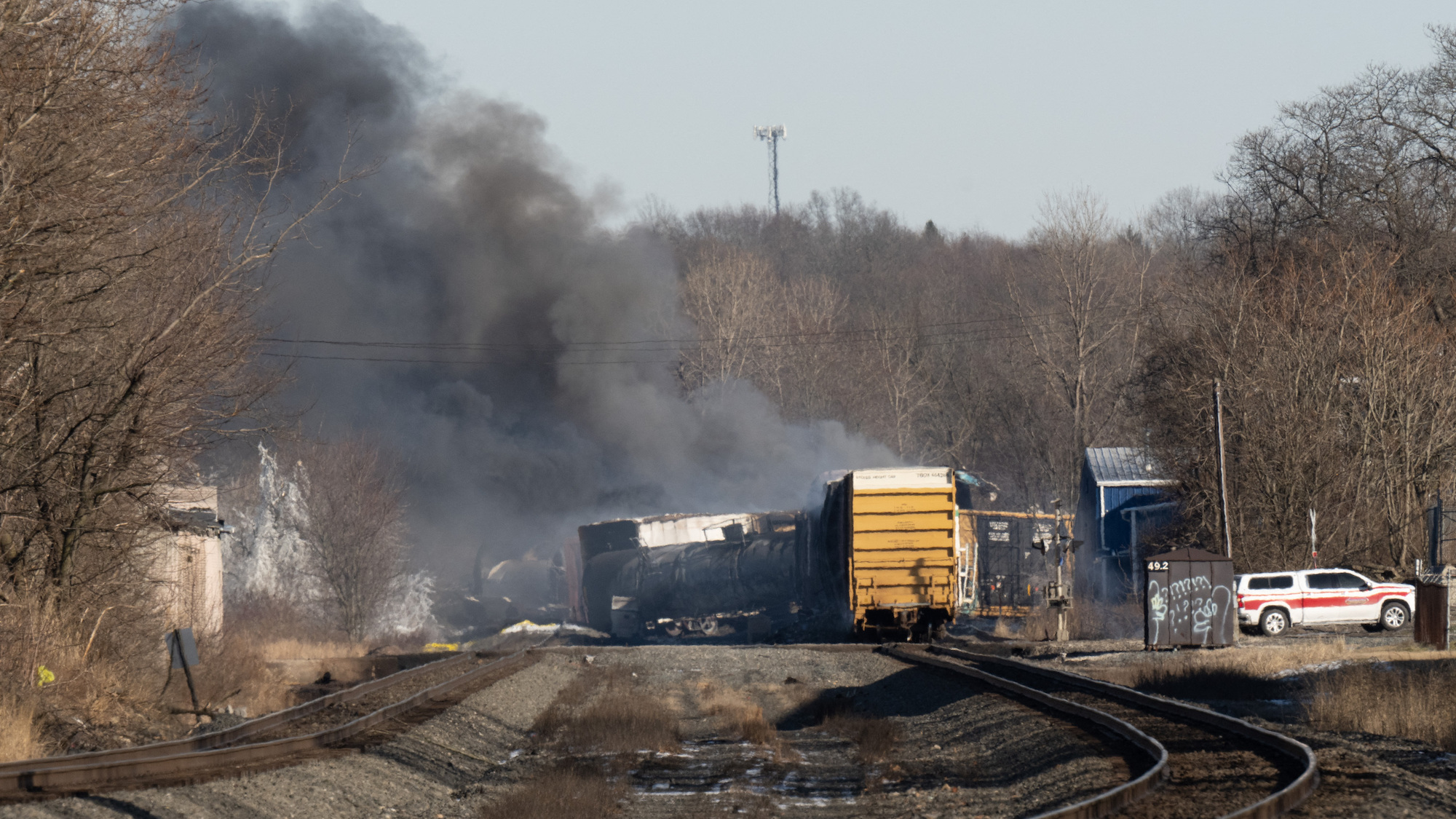Toxic Chemicals From Ohio Derailment: Months-Long Building Contamination

Table of Contents
The Extent of Chemical Dispersion and Building Contamination
The February 3rd derailment released a cocktail of hazardous substances, most notably vinyl chloride, butyl acrylate, and ethylhexyl acrylate. These chemicals, known for their volatility and potential to persist in the environment, pose a significant threat to building materials. The extent of contamination remains a critical concern.
-
Types of Chemicals and Persistence: Vinyl chloride, a known carcinogen, is particularly worrying due to its potential for long-term persistence in porous building materials like wood, drywall, and insulation. Butyl acrylate and ethylhexyl acrylate, while less extensively studied in this context, also raise concerns about their potential to leach out slowly, contributing to indoor air pollution.
-
Assessment Challenges: Assessing the extent of contamination presents significant challenges. Methods for testing building materials for these specific chemicals are not standardized, and the penetration of chemicals into various building materials (porous surfaces, embedded contaminants) makes accurate measurement difficult. Many homes and businesses lack comprehensive testing.
-
Indoor Air Pollution: A critical concern is the potential for indoor air pollution through off-gassing. As these chemicals slowly release from contaminated building materials, they can accumulate indoors, leading to continuous exposure for residents and workers. This necessitates thorough air quality testing in affected buildings.
-
Contamination Beyond Buildings: The environmental impact extends beyond building contamination. Soil contamination, water contamination, and surface contamination all contribute to the overall environmental pollution and the long-term health risks to the East Palestine community.
Health Risks Associated with Long-Term Exposure
Prolonged exposure to the chemicals released in the Ohio derailment poses significant health risks. The potential long-term effects are a major concern for residents.
-
Vinyl Chloride's Carcinogenicity: Vinyl chloride is a known human carcinogen, linked to various cancers, including liver, lung, and brain cancers. Exposure, even at low levels, increases the risk of these serious health conditions.
-
Other Health Impacts: Butyl acrylate and ethylhexyl acrylate are also associated with respiratory problems, skin irritation, and potential reproductive issues. The combination of chemicals released creates a complex exposure scenario, making it difficult to isolate the effects of each individual chemical.
-
Long-Term Health Monitoring: The need for ongoing health monitoring and medical support for the affected communities is paramount. A comprehensive health registry should be established to track health outcomes and identify potential links between exposure and specific health problems.
-
Challenges in Establishing Causality: Establishing a clear causal link between chemical exposure and long-term health outcomes is challenging. Variations in exposure levels and the presence of other environmental factors make epidemiological studies complex and require long-term monitoring.
The Challenges of Cleanup and Remediation
Cleaning up the building contamination from the Ohio derailment presents significant challenges. The process is complex, costly, and requires careful consideration of various factors.
-
Complex Remediation Techniques: Remediation techniques will vary depending on the level and type of contamination. Options include decontamination, which involves cleaning and sealing contaminated surfaces, or demolition in severe cases where complete removal of contaminated materials is necessary.
-
Financial Burden and Responsibility: The financial burden of the cleanup is substantial and raises questions about responsibility. Determining who will bear the costs—the railroad company, the government, or a combination—is a crucial aspect of the ongoing legal and political battles.
-
Long-Term Monitoring and Assessment: Ongoing environmental monitoring and assessment are crucial for evaluating the effectiveness of cleanup efforts and identifying any potential resurgence of contamination. This must be a long-term commitment to ensure community safety.
-
Regulatory Response and Accountability: The regulatory response to the crisis, including the role of the Environmental Protection Agency (EPA) and other agencies, requires further scrutiny. Ensuring accountability for the prevention, response, and remediation of this environmental disaster is essential.
Community Impact and Psychological Effects
Beyond the immediate environmental and physical health concerns, the Ohio derailment has had a significant psychological impact on the community.
-
Fear, Uncertainty, and Displacement: Residents face fear and uncertainty about their health, their homes, and their future. The disruption to daily life, the potential for long-term health problems, and the economic consequences have created widespread anxiety.
-
Mental Health Support: Access to mental health services is vital to support residents coping with the stress and trauma of the event and its aftermath. Community-based support programs are essential to address the widespread psychological distress.
-
Social and Economic Disruption: The derailment has caused significant social and economic disruption, impacting livelihoods, businesses, and the overall social fabric of the community. Long-term recovery efforts must address these issues.
Conclusion
The Ohio train derailment's release of toxic chemicals has created a prolonged and significant threat of building contamination, posing considerable health and environmental risks. The extent of the contamination, the challenges of cleanup, and the long-term health effects require sustained attention and comprehensive action. We must demand transparency and accountability from responsible parties to ensure thorough testing, effective remediation, and long-term monitoring of building contamination from the Ohio derailment. Understanding the ongoing threat of toxic chemicals and their impact is crucial for protecting the health and well-being of the affected communities. Stay informed about the latest developments and advocate for comprehensive solutions to address the long-term impact of this environmental disaster.

Featured Posts
-
 Lily Collins Calvin Klein Photos A Look At The New Campaign 5133600
May 11, 2025
Lily Collins Calvin Klein Photos A Look At The New Campaign 5133600
May 11, 2025 -
 Mc Ilroy Back In Action At Zurich Classic Alongside Lowry
May 11, 2025
Mc Ilroy Back In Action At Zurich Classic Alongside Lowry
May 11, 2025 -
 Eric Antoine Sa Vie Apres Le Divorce Et L Arrivee De Son Bebe Avec Sa Nouvelle Compagne
May 11, 2025
Eric Antoine Sa Vie Apres Le Divorce Et L Arrivee De Son Bebe Avec Sa Nouvelle Compagne
May 11, 2025 -
 Authenticity In Asian And Asian American Media Moving Beyond Simple Representation
May 11, 2025
Authenticity In Asian And Asian American Media Moving Beyond Simple Representation
May 11, 2025 -
 How Instagram Plans To Beat Tik Tok Ceos Insight
May 11, 2025
How Instagram Plans To Beat Tik Tok Ceos Insight
May 11, 2025
